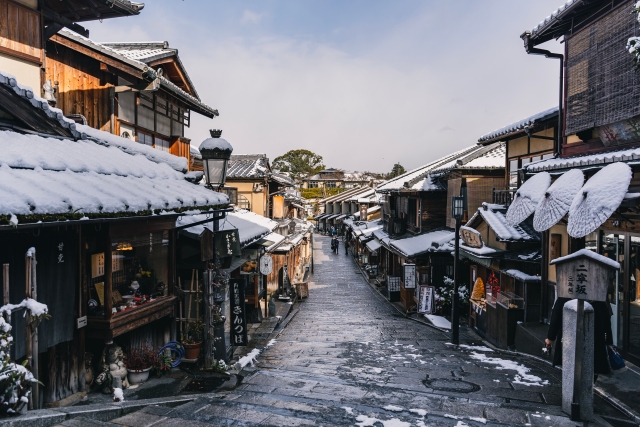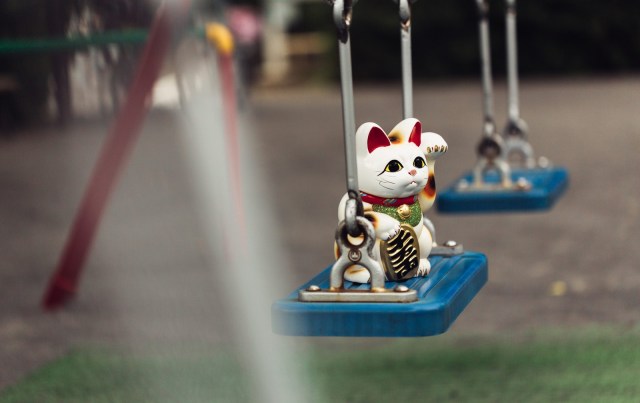
Arrgh, me corruption’ll cost ye a shiny gold doubloon!
Kyoto is considered one of Japan’s richest areas of history and traditional culture. Loaded with centuries-old places and customs, even the Starbucks is historical in this city. It’s a reputation that the city takes so seriously, it appears that even when their officials become corrupt, they make sure it’s done in a classy, traditional way.
▼ Ninenzaka, Kyoto
On 1 March, Kyoto Prefectural Police charged Atsushi Kubo with bribery for accepting gifts in exchange for his influence as the director of Kyoto City Children and Youth Support. This department handles child welfare cases in the city and in March of 2019 was conducting an audit of a nursery school.
It was regarding that matter that Kubo stands accused of accepting a gold watch valued at 450,000 yen (US$3,900) from the chairman of the Seva Welfare Association which oversees pre-school facilities. The chairman was also charged with bribery, but in an ensuing investigation, police found a koban that they believe was also gifted to Kubo by the chairman for dubious reasons.
Although it’s not as well known by name, most people have probably seen a koban in movies, manga, anime, or video games. It’s the old fashioned oval-shaped gold coin that was replaced by a more western-style currency system in the latter half of the 19th century.
▼ Maneki Neko are often holding a koban
It is said that in Japanese historical dramas you might hear these coins referred to as the “yamabukiiro no kashi” or “bright yellow sweets,” which is a clichéd euphemism for koban when used as a bribe. In such scenes the coins are discreetly placed in a box normally used for snacks given to people as souvenirs.
▼ The phrase is used during a bribe in this cut scene from the Yakuza spin-off Ryu ga Gotoku Kenzan
Even though koban are no longer currency, they’re still made of gold and carry quite a bit of value. In this case, Kubo’s koban is estimated to be worth several hundreds of thousands of yen (thousands of U.S. dollars).
So it’s serious business, but the fact that such an old-fashioned bribe was going on in Kyoto of all places made it hard for netizens to not poke fun at it.
“What year is it?! Tell me he put it in a box of yatsuhashi.”
“Hopefully he buried it under real snacks so it was harder to find.”
“Forsooth, m’lord is corrupt!”
“Was the luxury watch not enough? lol”
“In Kyoto this is the only acceptable way to bribe.”
“It’s just like on TV!”
“Why a koban? It’s got to be a lot harder to get ahold of than cash.”
“This has been known to happen in Japan from time to time…during the Edo period.”
“Bright yellow sweets!”
The legal proceedings in this matter are still in the early stages so it’s unclear what the fate of these two men will be. However, Edo Period law would likely dictate that they get face tattoos for their transgression, and they do always say that the punishment should fit the crime.
As for the rest of us, I guess the lesson to be learned today is that whenever someone offers you “bright yellow sweets” in Japan, you might have a life-altering decision to make.
Source: The Sankei News, Hachima Kiko
Top image: ©SoraNews24
Insert image; Pakutaso
● Want to hear about SoraNews24’s latest articles as soon as they’re published? Follow us on Facebook and Twitter!



 This bath bomb looks and feels like an Edo gold bar, is great for gifts or bathing like a shogun
This bath bomb looks and feels like an Edo gold bar, is great for gifts or bathing like a shogun “Good on the floor?” Five funny times Google Translate drops the ball with Japanese idioms
“Good on the floor?” Five funny times Google Translate drops the ball with Japanese idioms This beautiful, traditional Japanese building is actually a fully modern convenience store
This beautiful, traditional Japanese building is actually a fully modern convenience store 120-foot golden Chairman Mao golem attacked by trolls, taken down
120-foot golden Chairman Mao golem attacked by trolls, taken down “They slipped 10,000-yen bills into rice balls” — Bizarre election corruption in Aomori revealed
“They slipped 10,000-yen bills into rice balls” — Bizarre election corruption in Aomori revealed Japan’s new difficult-to-drink-from beer glass protects your liver, but it’s a brutal experience
Japan’s new difficult-to-drink-from beer glass protects your liver, but it’s a brutal experience Hello, cosmetics! Clinique teams up with Hello Kitty this summer for first-time collaboration
Hello, cosmetics! Clinique teams up with Hello Kitty this summer for first-time collaboration How to order snacks on a Shinkansen bullet train in Japan
How to order snacks on a Shinkansen bullet train in Japan Demon Slayer: Kimetsu no Yaiba gets new roller coaster attractions and food at Universal Studios Japan
Demon Slayer: Kimetsu no Yaiba gets new roller coaster attractions and food at Universal Studios Japan New samurai glasses are Japan’s latest weird must-have souvenir
New samurai glasses are Japan’s latest weird must-have souvenir Burger King Japan suddenly adds Dr. Pepper and Dr. Pepper floats to its menu nationwide
Burger King Japan suddenly adds Dr. Pepper and Dr. Pepper floats to its menu nationwide New Nintendo Lego kit is a beautiful piece of moving pixel art of Mario and Yoshi【Photos】
New Nintendo Lego kit is a beautiful piece of moving pixel art of Mario and Yoshi【Photos】 What do you eat when you catch a cold? We asked 11 of our Japanese reporters
What do you eat when you catch a cold? We asked 11 of our Japanese reporters High-fashion Totoro cuddle purse is like an elegant stroll in the forest【Photos】
High-fashion Totoro cuddle purse is like an elegant stroll in the forest【Photos】 Why Japanese doesn’t need swear words
Why Japanese doesn’t need swear words Nintendo history you can feel – Super NES, N64, and GameCube controllers become capsule toys
Nintendo history you can feel – Super NES, N64, and GameCube controllers become capsule toys “The most Delicious Cup Noodle in history” – Japan’s French Cup Noodle wins our heart【Taste test】
“The most Delicious Cup Noodle in history” – Japan’s French Cup Noodle wins our heart【Taste test】 Starbucks releases a cute Frappuccino and Unicorn Cake…but not in Japan
Starbucks releases a cute Frappuccino and Unicorn Cake…but not in Japan Kyoto Tower mascot termination reveals dark side behind cute Japanese characters
Kyoto Tower mascot termination reveals dark side behind cute Japanese characters McDonald’s Japan’s Soft Twist Tower: A phantom ice cream only sold at select branches
McDonald’s Japan’s Soft Twist Tower: A phantom ice cream only sold at select branches Yabai Ramen: What makes this Japanese ramen so dangerous?
Yabai Ramen: What makes this Japanese ramen so dangerous? Finally! Nintendo Japan expands Switch 8-bit controller sales to everybody, Online member or not
Finally! Nintendo Japan expands Switch 8-bit controller sales to everybody, Online member or not Japanese government wants to build luxury resorts in all national parks for foreign tourists
Japanese government wants to build luxury resorts in all national parks for foreign tourists To combat declining birth rate, Japan to begin offering “Breeding Visas” to foreigners
To combat declining birth rate, Japan to begin offering “Breeding Visas” to foreigners 10 things you should buy at 7-Eleven in Japan
10 things you should buy at 7-Eleven in Japan Studio Ghibli releases anime heroine cosplay dresses that are super comfy to wear
Studio Ghibli releases anime heroine cosplay dresses that are super comfy to wear Woman charged for driving suitcase without a license in Osaka
Woman charged for driving suitcase without a license in Osaka Studio Ghibli unveils My Neighbour Totoro miniature house model
Studio Ghibli unveils My Neighbour Totoro miniature house model Kyoto experiencing problems with foreign tourists not paying for bus fares, but not on purpose
Kyoto experiencing problems with foreign tourists not paying for bus fares, but not on purpose Fighting mild hunger with a Japanese soda that turns into jelly in the stomach【Taste test】
Fighting mild hunger with a Japanese soda that turns into jelly in the stomach【Taste test】 Studio Ghibli’s Howl’s Moving Castle tapestry unveiled in Japan for first time
Studio Ghibli’s Howl’s Moving Castle tapestry unveiled in Japan for first time McDonald’s new Happy Meals offer up cute and practical Sanrio lifestyle goods
McDonald’s new Happy Meals offer up cute and practical Sanrio lifestyle goods Sales of Japan’s most convenient train ticket/shopping payment cards suspended indefinitely
Sales of Japan’s most convenient train ticket/shopping payment cards suspended indefinitely Sold-out Studio Ghibli desktop humidifiers are back so Totoro can help you through the dry season
Sold-out Studio Ghibli desktop humidifiers are back so Totoro can help you through the dry season Japanese government to make first change to romanization spelling rules since the 1950s
Japanese government to make first change to romanization spelling rules since the 1950s Foreigner’s request for help in Tokyo makes us sad for the state of society
Foreigner’s request for help in Tokyo makes us sad for the state of society Ghibli founders Toshio Suzuki and Hayao Miyazaki contribute to Japanese whisky Totoro label design
Ghibli founders Toshio Suzuki and Hayao Miyazaki contribute to Japanese whisky Totoro label design Doraemon found buried at sea as scene from 1993 anime becomes real life【Photos】
Doraemon found buried at sea as scene from 1993 anime becomes real life【Photos】 Tokyo’s most famous Starbucks is closed
Tokyo’s most famous Starbucks is closed Princesses, fruits, and blacksmiths: Study reveals the 30 most unusual family names in Japan
Princesses, fruits, and blacksmiths: Study reveals the 30 most unusual family names in Japan Japanese cops called in to break up drunken brawl by other Japanese cops who were drunk
Japanese cops called in to break up drunken brawl by other Japanese cops who were drunk Getting stopped by the police in Japan – how often does it happen (and why?)
Getting stopped by the police in Japan – how often does it happen (and why?) Cops in Japan use police box as shag shack, one goes on to have second affair with other officer
Cops in Japan use police box as shag shack, one goes on to have second affair with other officer Osaka elementary school becomes first in Japan to have a police box established on campus
Osaka elementary school becomes first in Japan to have a police box established on campus Optical illusions from Japanese Twitter leave us questioning the universe and reality 【Videos】
Optical illusions from Japanese Twitter leave us questioning the universe and reality 【Videos】 Honest Tokyo: 3.3 billion yen of lost cash handed in to police in 2014 alone
Honest Tokyo: 3.3 billion yen of lost cash handed in to police in 2014 alone What’s it like to shop at Family Mart’s first “unmanned convenience store” in Japan?
What’s it like to shop at Family Mart’s first “unmanned convenience store” in Japan? Japan’s awesomely adorable cat pseudo-currency is actually usable at one very special place【Pics】
Japan’s awesomely adorable cat pseudo-currency is actually usable at one very special place【Pics】 10 factors that make Japan a safe country
10 factors that make Japan a safe country Champion figure skater Yuzuru Hanyu to make on-screen acting debut as samurai lord!
Champion figure skater Yuzuru Hanyu to make on-screen acting debut as samurai lord! Samurai Ninja Museum Tokyo With Experience is true to its name, lets you slice with real katana
Samurai Ninja Museum Tokyo With Experience is true to its name, lets you slice with real katana Does Japan’s five-yen coin need a foreigner-friendly redesign?
Does Japan’s five-yen coin need a foreigner-friendly redesign? Creator of Japanese manga Bleach searches for fan to thank him for his dying message
Creator of Japanese manga Bleach searches for fan to thank him for his dying message Japanese youths anger police by sitting at kotatsu table at busy Kyoto intersection【Video】
Japanese youths anger police by sitting at kotatsu table at busy Kyoto intersection【Video】 New arrest warrant issued for Kyoto Animation arson suspect
New arrest warrant issued for Kyoto Animation arson suspect
Leave a Reply